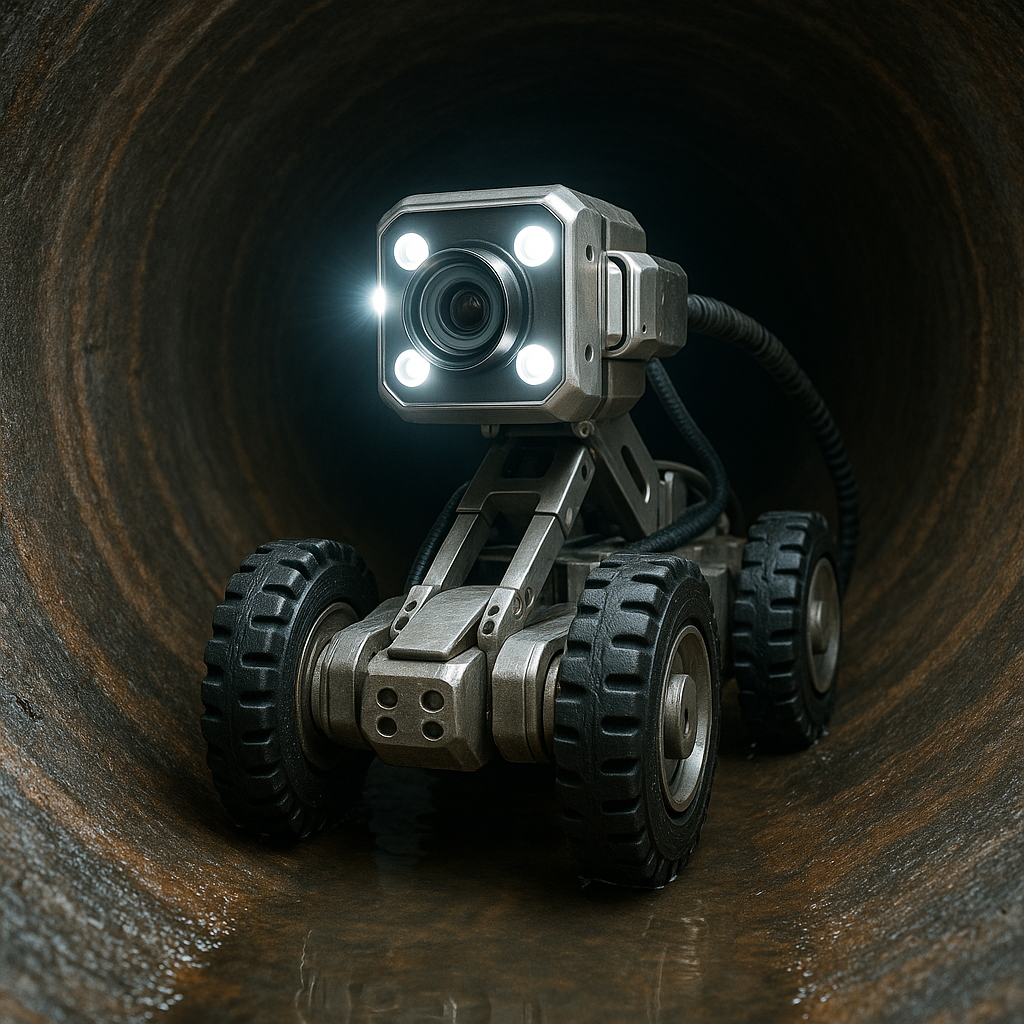Mastering Sewer Inspection Documentation in 2024
Explore advanced techniques and technologies for efficient sewer inspection documentation in 2024, with a focus on accuracy and compliance.

Introduction
In 2024, the sewer inspection industry is experiencing a transformative phase driven by technological advancements, evolving regulations, and expanding market opportunities. This comprehensive guide explores the critical aspects of sewer inspection documentation, providing professionals with the insights needed to leverage new technologies, comply with stringent regulations, and capitalize on market trends.
New Technologies and Equipment
Robotics and Autonomous Systems
The integration of robotics and autonomous systems, such as crawler robots equipped with high-definition pan-and-tilt cameras, is revolutionizing sewer inspections. These technologies enhance mobility and data collection accuracy, allowing inspectors to reach hard-to-access areas and gather comprehensive visual documentation.
AI-Powered Automated Defect Detection
AI technology is being deployed to analyze video feeds in real time, identifying issues such as cracks, joint displacements, and root intrusions. This automation increases inspection precision and reduces human error, making documentation more reliable.
GIS and 3D Mapping Integration
The integration of Geographic Information Systems (GIS) and 3D mapping technologies provides detailed spatial analysis and infrastructure mapping. This allows for comprehensive documentation that supports strategic infrastructure planning and maintenance.
Mobile Inspection Systems
Mobile sewer inspection systems with remote monitoring capabilities are on the rise. These systems facilitate predictive maintenance, crucial for urban areas with aging infrastructure. The ability to monitor and document sewer conditions in real-time enhances decision-making and maintenance strategies.
Industry Regulations and Standards
Stricter Environmental Regulations
In 2024, compliance with local, state, and federal regulations is more critical than ever. Stricter environmental regulations aim to ensure wastewater management is effective and environmentally sound, driving demand for thorough and reliable sewer inspections.
Challenges and Opportunities
While compliance presents challenges, particularly for smaller municipalities, it also drives market growth by encouraging the adoption of advanced technologies. Companies that stay ahead of regulatory changes can position themselves as leaders in the industry.
Market Trends and Business Opportunities
Market Growth and Projections
The sewer inspection systems market is projected to grow from approximately USD 500 million in 2024 to USD 800 million by 2033, with a CAGR of about 5.5%. This growth is fueled by smart city initiatives, infrastructure upgrades, and a shift toward predictive maintenance.
Opportunities in Developing Economies
Developing economies and urban centers investing in infrastructure modernization present significant opportunities for businesses offering advanced sewer inspection solutions. Early adopters of these technologies can gain a competitive advantage.
Safety Protocols and Best Practices
Enhancing Worker Safety
Modern inspection methods reduce the need for manual entry into hazardous environments. Robotic systems and remote-controlled cameras minimize exposure to harmful substances, enhancing worker safety and inspection efficiency.
Documentation Best Practices
- Utilize high-definition video documentation to capture detailed inspections.
- Implement real-time data analysis to support timely maintenance decisions.
- Ensure comprehensive reporting for regulatory compliance and client value.
Recent Case Studies and Success Stories
Robotic Sewer Camera Systems
Robotic systems like the Easy Sight X5-HS have shown superior efficiency over traditional methods. These systems reduce crew size, increase inspection speed, and provide annotated HD video reports, leading to fewer repeat visits and lower maintenance costs.
Cost and Pricing Information
Traditional vs. Advanced Systems
- Traditional Inspections: Lower initial equipment costs but require larger crews and may lead to higher long-term expenses due to less accurate data.
- Advanced Systems: Higher initial costs but reduce labor needs, improve accuracy, and lower maintenance expenses over time, offering enhanced reporting capabilities for better client decision-making.
Conclusion
Sewer inspection documentation in 2024 is increasingly reliant on high-definition video capture, AI-assisted defect detection, GIS integration, and robotic mobility. These advancements deliver safer, more accurate, and cost-effective infrastructure assessments, aligning with evolving regulatory demands and market growth trends.
Practical Tips and Actionable Advice
- Invest in training for staff to effectively use new technologies.
- Stay updated on regulatory changes to ensure compliance.
- Consider the long-term cost benefits of advanced inspection systems.
References
- Industry reports and publications
- Regulatory updates and standards
- Case studies on robotic inspection systems
- Market analysis and forecasts